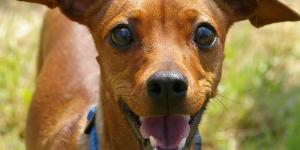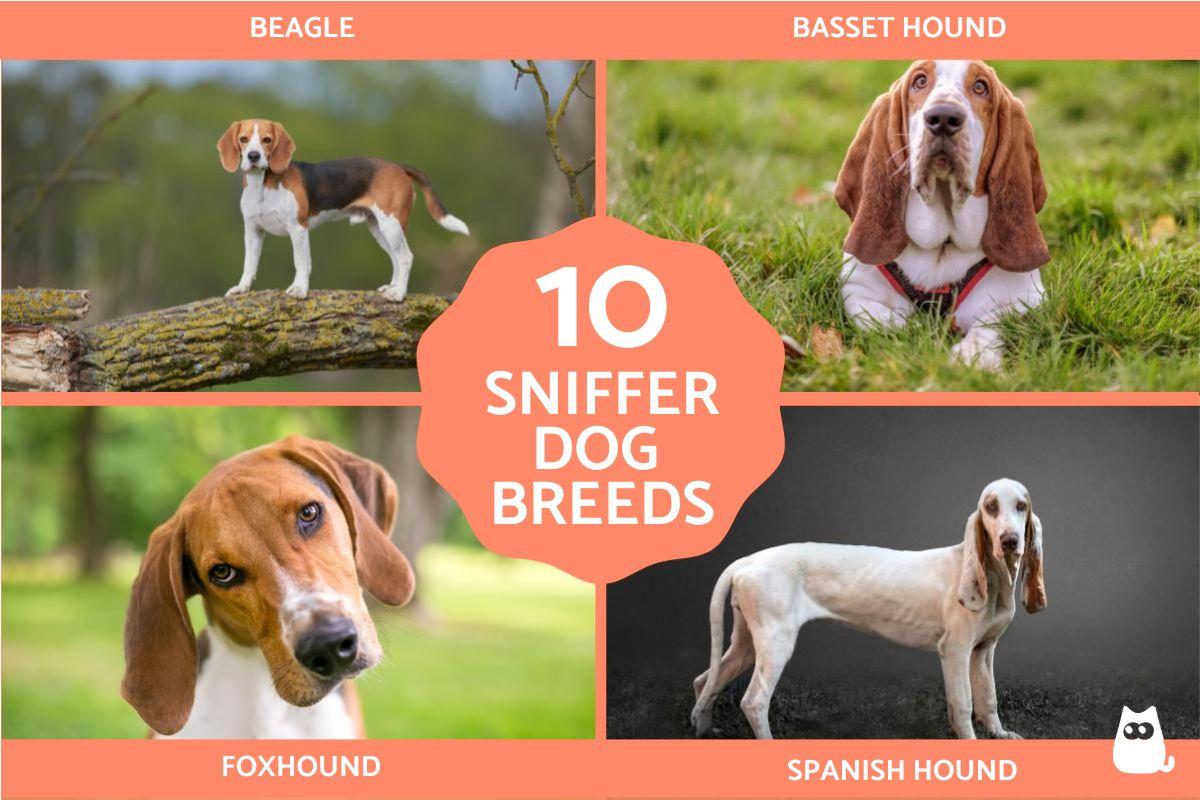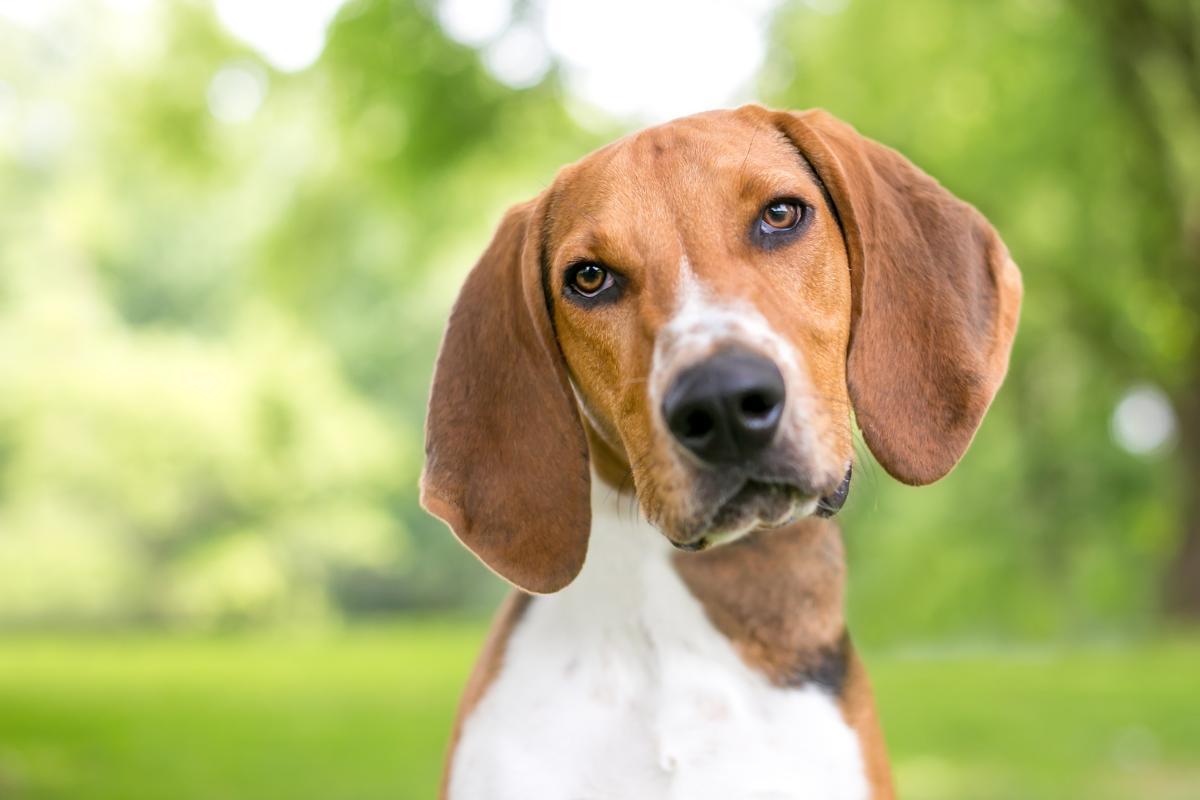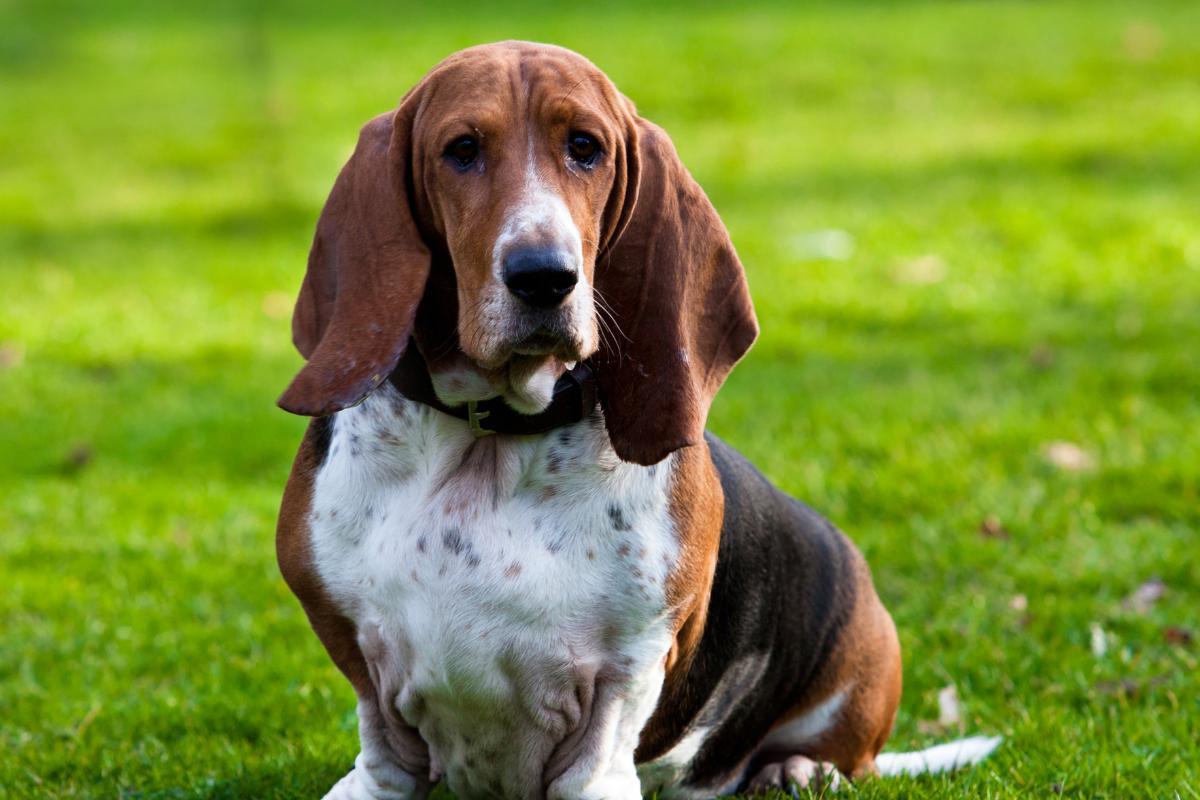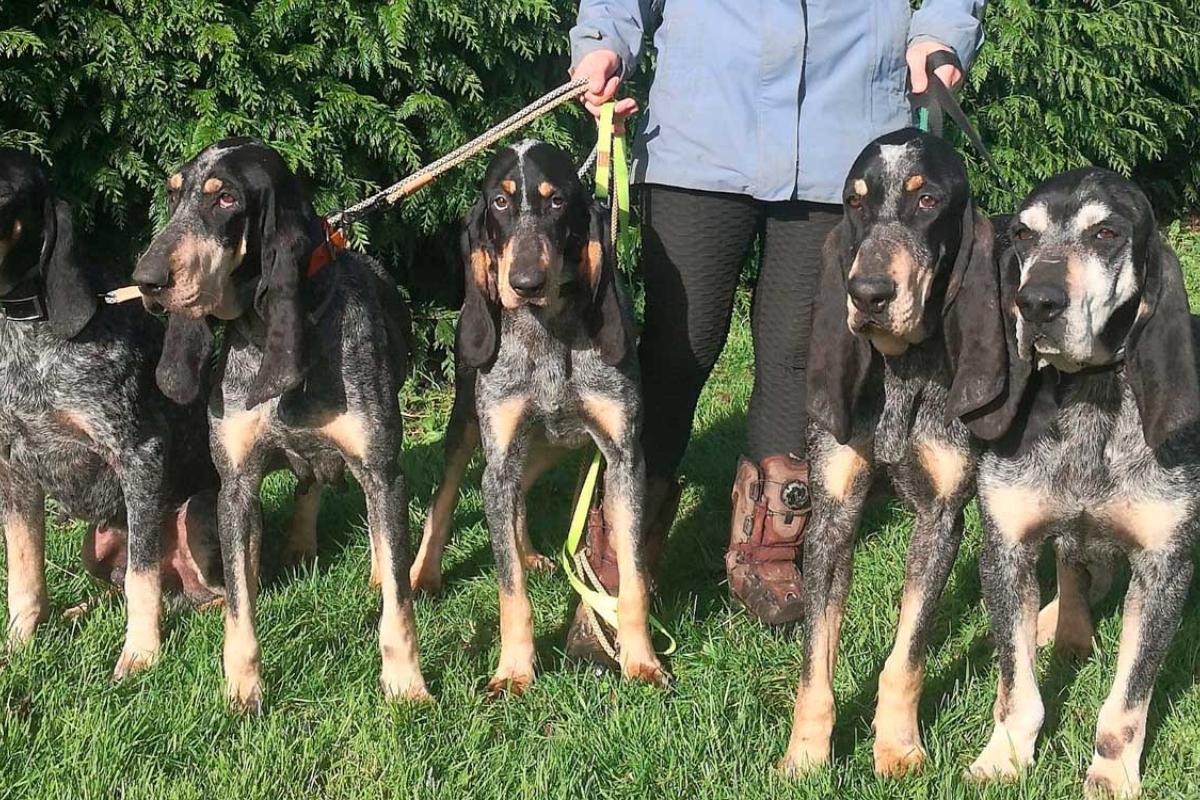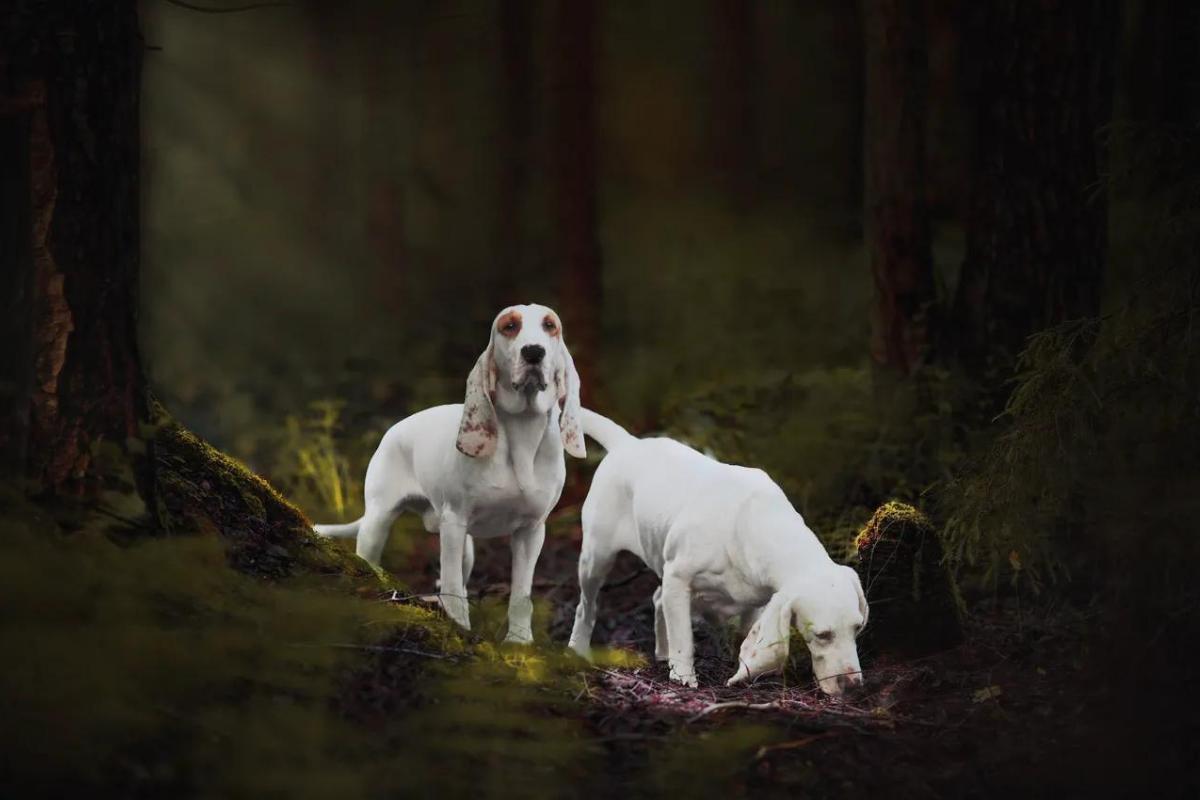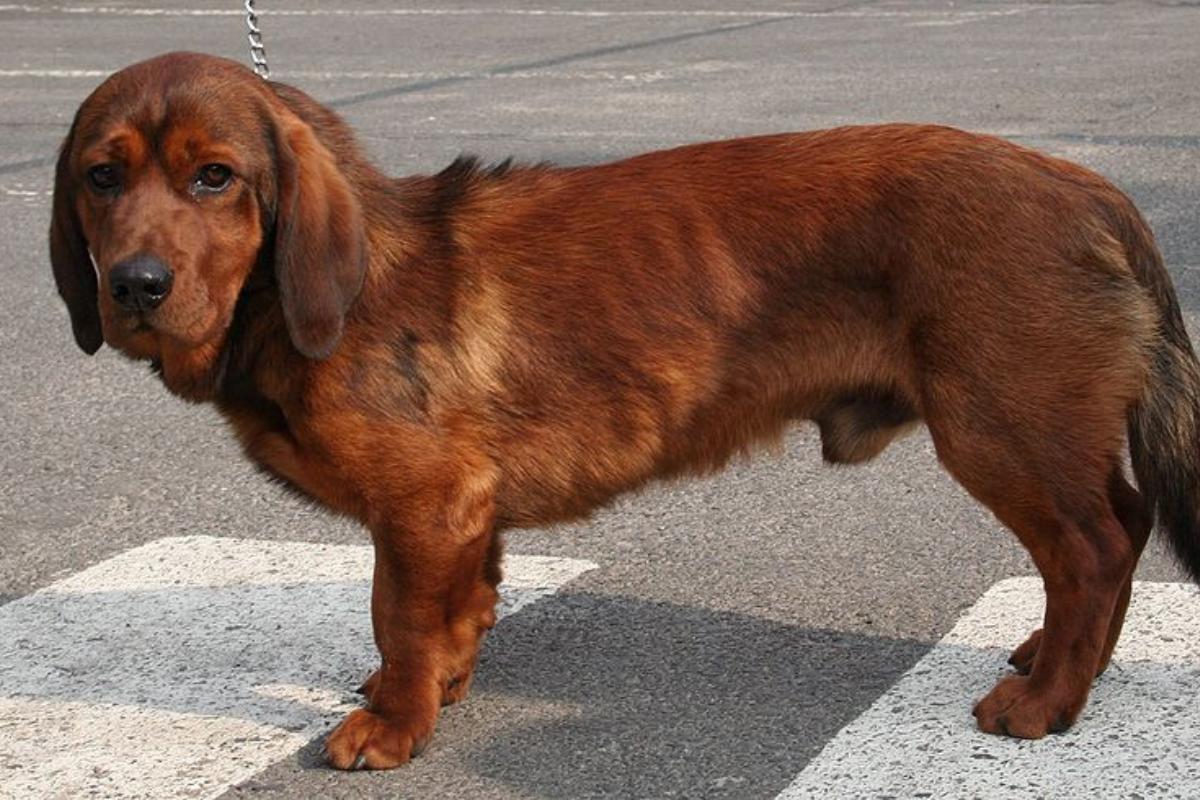Sniffer Dog Breeds

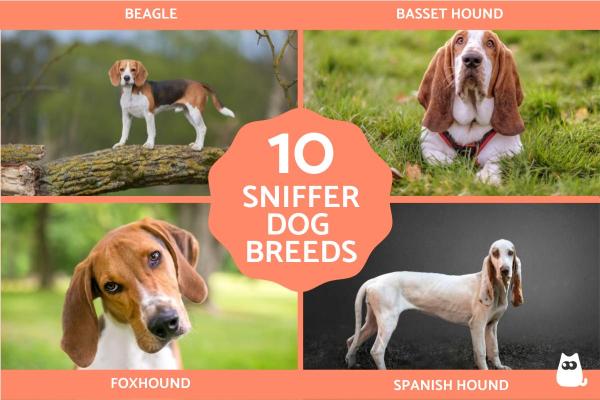

See files for Dogs
Sniffer dogs, renowned for their exceptional sense of smell, are specially trained to detect and locate a wide range of substances and objects. These breeds are highly intelligent and can be easily trained to follow specific commands and perform their tasks with accuracy. These skilled canines play a crucial role in various specialized tasks, such as drug detection, search and rescue, cadaver detection, explosive detection, and wildlife conservation. Their ability to sniff out illegal narcotics and explosives helps keep communities safe.
In this AnimalWised article, we'll dive into some of the top sniffer dog breeds, highlighting their key characteristics and with photos.
- Bloodhound
- Basset Hound
- Beagle
- Harrier
- Foxhound
- Basset Artesien Normand
- Grand Bleu de Gascogne
- Spanish Hound
- Bavarian Mountain Hound
- Alpine Dachsbracke
- Other breeds of sniffer dogs
Bloodhound
The Bloodhound, renowned for its extraordinary olfactory abilities, is widely considered the ultimate sniffer dog. Descended from ancient St. Hubert hounds, this breed has a rich historical legacy as a hunting and tracking dog.
Studies have shown that Bloodhounds possess approximately 300 million olfactory receptors, significantly more than other dog breeds. This impressive sensory capability allows them to track scents that are days or even weeks old. As a result, Bloodhounds are frequently employed in search and rescue missions and law enforcement operations.
Their ability to detect and follow faint scents over long distances has led to numerous successful recoveries and investigations. Bloodhounds are often used in legal proceedings as evidence of a person's presence at a particular location. Their tracking abilities can provide valuable information in criminal investigations.
Bloodhounds are known for their gentle and affectionate nature. They are often described as "lazy" when not working, but they are highly motivated when on the trail. Due to their strong scent-tracking instincts, Bloodhounds can be relatively easy to train. However, they require consistent socialization and positive reinforcement to ensure they are well-behaved.
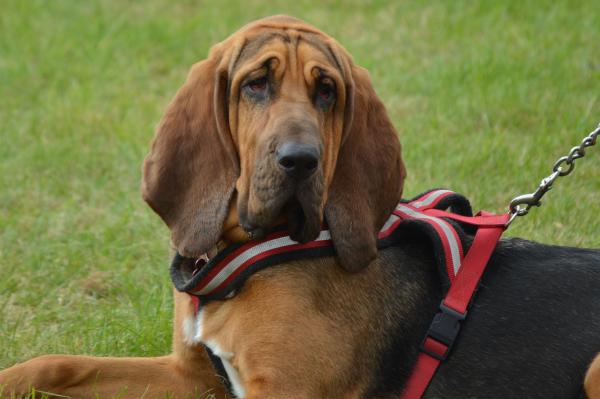
Basset Hound
While the exact origins of the Basset Hound remain a subject of debate, it's widely accepted that they share a close kinship with the Bloodhound. Despite their significant size difference, these two breeds exhibit striking morphological similarities, particularly in their cranial and facial features. Both possess long, drooping ears, a distinctive "sad" expression, and a shared ancestry that likely contributes to their exceptional scent-tracking abilities.
Like Bloodhounds, Basset Hounds have been used in legal proceedings as evidence of a person's presence at a particular location. Their tracking abilities can provide valuable information in criminal investigations.
While they can be stubborn, Basset Hounds are intelligent and can be trained with patience and positive reinforcement. They are generally friendly and enjoy interacting with other dogs and people.
Curious about the broader world of hound dogs? Don’t miss our exploration of the different hound breeds.
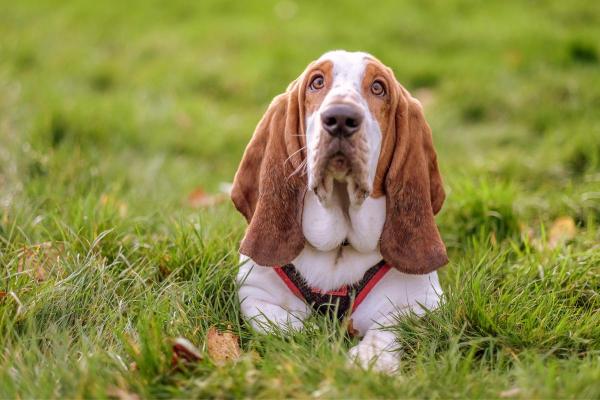
Beagle
The Beagle, like the Basset Hound, is a scent-tracking breed developed in the United Kingdom with a primary focus on hunting. The Beagle's origins can be traced back to ancient Greece and Rome, where dogs of similar size and appearance were used for hunting rabbits and hares. During the Roman Conquest of Britain, these small hounds were introduced to the British Isles, where they eventually evolved into the modern Beagle.
While often confused due to their similar roles, Beagles and Basset Hounds have distinct physical characteristics. Beagles are taller, more athletic, and have longer ears and muzzles compared to Basset Hounds. Their expression is typically cheerful and lively, contrasting with the Basset Hound's "sad" look.
Beagles are renowned for their playful, intelligent, and energetic nature. They are particularly popular among children due to their friendly demeanor. To maintain stable behavior, Beagles require regular physical and mental stimulation.
Love learning about sniffer dogs? Take it a step further by discovering how to distinguish between two classic hound breeds, the Beagle and the Basset Hound.

Harrier
The Harrier, though less well-known than the Beagle, bears a strong resemblance in both appearance and scenting abilities. Both breeds descend from the English Foxhound and were developed to excel in pack hunting. However, the Harrier is generally taller and more robust than the Beagle. That said, there can be some variation in size within the Harrier breed, with some individuals being slightly smaller or larger than the standard.
In terms of temperament, the Harrier is known for its friendly and sociable nature, similar to the Beagle. However, they tend to be a bit more independent. While they generally get along well with other dogs, their strong hunting instincts necessitate early socialization to ensure harmonious interactions, particularly with smaller animals.
Harriers are known for their distinctive baying sound, often described as a "cry." This sound is used during hunts to communicate with other hounds and locate the prey.
The Harrier played a significant role in English hunting history, particularly in the sport of hare hunting. They were prized for their speed, endurance, and ability to work in packs.

Foxhound
The origins of Foxhounds can be traced back to the Middle Ages, when they were bred for hunting foxes in England. Their ancestry includes the Belgian Bloodhound, a breed renowned for its tracking abilities. Over time, Foxhounds became a popular and essential tool for hunting. Their speed, endurance, and keen sense of smell made them ideal for pursuing foxes across varied terrain.
Today, there are two recognized breeds: the English Foxhound and the American Foxhound. The English Foxhound, in particular, has played a significant role in the development of other hound breeds, including the Beagle, Harrier, and even the American Foxhound. This lineage underscores their remarkable sense of smell, making them among the top scent-tracking dogs in the world.
Foxhounds are naturally pack animals and thrive in a group setting. They are highly social and enjoy the company of other dogs.
Foxhounds are intelligent dogs that can be trained to perform various tasks, including hunting, tracking, and search and rescue. Despite their hunting instincts, Foxhounds are generally gentle and affectionate with people, making them good family companions.
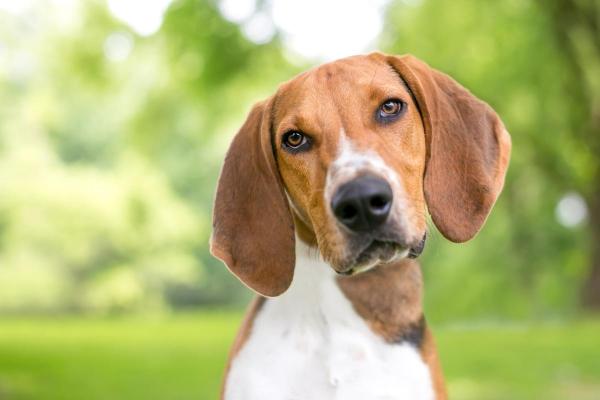
Basset Artesien Normand
The Basset Artesien Normand is a medium-sized hound breed originating from France. It's one of several French hound breeds that include the term "Basset" in their official names, a reference to their short stature.
While the Basset Artesien Normand shares many physical similarities with the Basset Hound, including a long, robust body, short legs, drooping ears, and a sad expression, it is notably lighter. Adult Basset Artesien Normands typically weigh less than 20 kg (44 lbs), compared to Basset Hounds, which can reach 40 kg (88 lbs).
Despite their smaller size, Basset Artesien Normands are still excellent hunters. They possess a keen sense of smell and are known for their perseverance and determination on the trail. Both breeds are known for their gentle, affectionate nature. However, the Basset Artesien Normand may exhibit a slightly more independent and stubborn streak.

Grand Bleu de Gascogne
Originating from the historic region of Gascony in southwestern France, the Grand Bleu de Gascogne is an ancient tracking dog breed. Its presence in France dates back to the 14th century, when it was used for hunting large game, including bears, wild boars, and wolves.
This imposing hound is characterized by its large, well-muscled body, long legs, and short, dense coat. Its coat is typically a deep blue-gray color with black and tan markings.
Known for their calm and gentle nature, Grand Bleu de Gascogne dogs are often described as "noble" and "dignified." They are loyal, affectionate, and good with children and other animals.
Capable of tracking scents for several days or even weeks, this breed has been used for hunting and tracking purposes for centuries. They are known for their endurance, stamina, and ability to follow a scent for long distances.
Learn more about other popular French breeds in this other article.

Spanish Hound
Native to Spain, the Spanish Hound is a medium-sized breed with a rich history dating back to the late Middle Ages. Its hunting prowess is documented in literary classics like "Libro de la Montería," written by King Alfonso XI. Known for its exceptional sense of smell, the Spanish Hound is an excellent tracker.
Originally bred for small game hunting, particularly hares, the Spanish Hound was also used to hunt larger animals like wild boars and deer. Their strong hunting instincts and determination make them relentless in their pursuit of prey, regardless of size. Spanish hounds likely employed various hunting techniques, such as baying, tracking, and driving prey into nets or traps, to successfully hunt larger game.
Unlike many other tracking dog breeds, the Spanish Hound typically hunted alone, alongside a human hunter.In fact, they are known for its independent nature. They are strong-willed and can be stubborn at times. However, despite their independent streak, Spanish Hounds are affectionate and loyal to their families.
While the Spanish Hound was developed in both small and large sizes, only the medium-sized variety is recognized today. They stand 46-56 cm (18-22 inches) tall at the shoulder and weigh 14-20 kg (30-45 pounds). Be sure to read this other article, where we explore the most popular Spanish breeds.
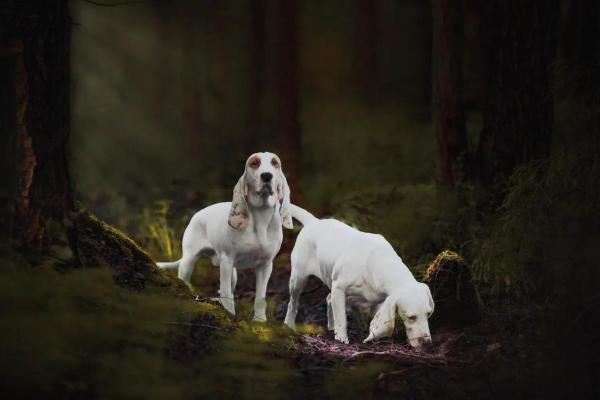
Bavarian Mountain Hound
Originating from Germany, the Bavarian Mountain Hound, also known as the Bayerische Gebirgsbracke, is a medium-sized scent-tracking dog. While its ancestry can be traced back to ancient European hounds, its current appearance has been influenced by crosses with other related breeds during the late 18th and early 19th centuries.
As its name suggests, the Bavarian Mountain Hound was originally bred for hunting in mountainous regions of Germany. Its strong build, endurance, and keen sense of smell made it well-suited for this challenging terrain. It is characterized by its slightly elongated, well-muscled body. Renowned for its exceptional scenting ability, this breed is a valuable asset for hunting and tracking.
While loyal and affectionate with family, the Bavarian Mountain Hound can be reserved around strangers. Early socialization is crucial to ensure they are friendly and well-adjusted.
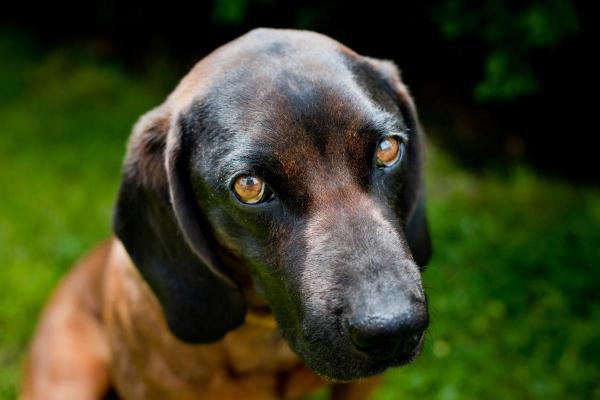
Alpine Dachsbracke
The Alpine Dachsbracke is a working scent hound recognized by the FCI. While its exact origins are unclear, hunting dogs resembling the modern breed have been used in Austria's mountainous regions since ancient times.
Officially recognized in 1932, the Alpine Dachsbracke is a medium-sized, robust dog. Historically used for tracking wounded roe deer and hunting hares and foxes, this breed is known for its exceptional scenting ability and fearless demeanor during hunts.
Despite their hunting prowess, Alpine Dachsbrackes are typically kind, calm, and loyal to their families. Due to their intelligence and trainability, Alpine Dachsbrackes can be taught various commands and tricks. Early socialization is essential to ensure they are well-adjusted and friendly with other animals and people.

Other breeds of sniffer dogs
The FCI (Fédération Cynologique Internationale) classifies over 60 dog breeds in Group 6, which is dedicated to scent hounds, bloodhounds, and related breeds. While we've focused on just ten of these breeds in previous sections, there are many other dogs with exceptional scenting abilities that deserve mention. To keep things concise, we'll simply list these additional breeds, following the original FCI classification:
Hound-type dogs:
- Brazilian Tracker (Brazil)
- Black and Tan Coonhound (United States)
- Billy (France)
- Grand Gascon Saintongeois (France)
- Grand Griffon Vendéen (France)
- Grand Anglo-Français Blanc et Orange (France)
- Grand Anglo-Français Blanc et Noir (France)
- Grand Anglo-Français Tricolore (France)
- Français Blanc et Orange (France)
- Français Blanc et Noir (France)
- Français Tricolore (France)
- Polish Hound (Poland)
- Otterhound (United Kingdom)
- Austrian Black and Tan Hound (Austria)
- Tyrolean Hound (Austria)
- Styrian Coarse-haired Hound (Austria)
- Bosnian Coarse-haired Hound (Barak) (Bosnia and Herzegovina)
- Istrian Shorthaired Hound (Croatia)
- Istrian Wirehaired Hound (Croatia)
- Posavac Hound (Croatia)
- Slovakian Hound (Slovenský Kopov) (Slovakia)
- Finnish Hound (Finland)
- Beagle-Harrier (France)
- Briquet Griffon Vendéen (France)
- Griffon Bleu de Gascogne (France)
- Griffon Nivernais (France)
- Fauve de Bretagne (France)
- Petit Bleu de Gascogne (France)
- Porcelaine (France)
- Anglo-Français de Petite Vénerie (France)
- Artois Hound (France)
- Ariégeois (France)
- Poitevin (France)
- Hellenic Hound (Greece)
- Transylvanian Hound (Hungary)
- Italian Wirehaired Hound (Segugio Italiano a Pelo Forte) (Italy)
- Italian Shorthaired Hound (Segugio Italiano a Pelo Raso) (Italy)
- Montenegrin Mountain Hound (Montenegro)
- Hygen Hound (Norway)
- Halden Hound (Norway)
- Norwegian Hound (Dunker) (Norway)
- Serbian Hound (Serbia)
- Serbian Tricolour Hound (Serbia)
- Smålandsstövare (Sweden)
- Hamiltonstövare (Sweden)
- Schillerstövare (Sweden)
- Swiss Hound (Schweizer Laufhund) (Switzerland)
- Westphalian Dachsbracke (Germany)
- German Hound (Deutsche Bracke) (Germany)
- Basset Bleu de Gascogne (France)
- Basset Fauve de Bretagne (France)
- Grand Basset Griffon Vendéen (France)
- Petit Basset Griffon Vendéen (France)
- Drever (Sweden)
- Small Swiss Hound (Schweizer Niederlaufhund) (Switzerland)
Tracking dogs:
- Hanoverian Scenthound (Germany)
- Bavarian Mountain Scenthound (Germany)
Related breeds:
- Dalmatian (Croatia)
- Rhodesian Ridgeback (South Africa)
Want to understand more about the organization of dog breeds? Check out our guide on how dogs are classified into various types and groups.
If you want to read similar articles to Sniffer Dog Breeds, we recommend you visit our Facts about the animal kingdom category.




